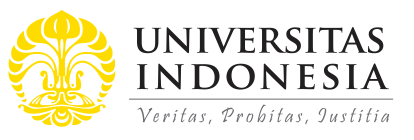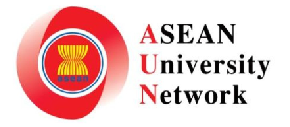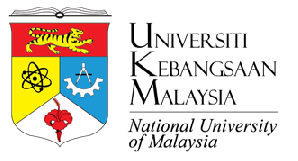
Abstract
With the inevitability of population growth and urbanization, governments have initiated the development and spatial planning of smart and green cities. By conducting direct observation and focus group discussion (FGD) with management unit representatives and residents, this study identified three priority issues in Rusunawa Muara Baru, Pluit, North Jakarta: access to clean water, management of household waste, and the lack of a public area for social activities or interaction. This paper aims to solve these problems through the implementation of an integrated model of Green Rusunawa, especially in Towers 5, 6, and 7. The stages of this program include preparation, implementation, and evaluation and sustainability. This program adopted a qualitative descriptive approach using observation, interview, and FGD to reveal the challenges, conducted informal deliberations as well as attributed the audience to the local government, observed and recorded the infrastructure program establishment and implementation, and held informal discussions and training for program management and resident representatives for the final stage. Green Rusunawa was created within the concept of green living, green environment, and green space, each through the successful utilization of rainwater harvesting (RWH), management of the waste bank, and the availability of the learning center. RWH and the waste bank quantitatively provide tangible benefits for the fulfillment of water needs and augment family income, respectively. Meanwhile, the learning center is to be developed into an interaction space for residents to conduct positive activities.
References
Agyaputeri, B. K., & Rahayu, S. (2017). Kajian kualitas hidup masyarakat Waduk Pluit pascarelokasi di Rusunawa Muara Baru (Study on the quality of life of the post-relocation Pluit Reservoir community in Muara Baru Rusunawa). Jurnal Pengembangan Kota, 5(1), 18–27. https://doi.org/10.14710/jpk.5.1.17-27
Asian Development Bank. (2012). Green cities (e-book). Asian Development Bank.
Baird, A., & Esteban, T. A. O. (2012). Green cities: A water-secure future. In M. Lindfield & F. Steinberg (Eds.), Green cities (e-book) (pp. 218–261). Asian Development Bank. https://www.think-asia.org/bitstream/handle/11540/95/green-cities.pdf?sequence=1#page=233
Bakici, T. Y., Almirall, E., & Wareham, J. (2013). A smart city initiative: The case of barcelona. J Knowl Econ, 4, 135–148. https://doi.org/10.1007/s13132-012-0084-9
Beard, V. A., & Dasgupta, A. (2006). Collective action and community-driven development in rural and urban Indonesia. Sage Journal, 43(9), 1451–1468. https://doi.org/10.1080%2F00420980600749944
Bhuiyan, S. H. (2011). Social capital and community development: An analysis of two cases from India and Bangladesh. Journal of Asian and African Studies, 46(6), 533–545. https://doi.org/10.1177/0021909611401511
Byun, G., & Ha, M. (2016). The factors influencing residential satisfication by public rental housing type. Journal of Asian Architecture and Building Engineering, 15(3), 535–542. https://doi.org/10.3130/jaabe.15.535
Cossetta, A., & Palumbo, M. (2014). The co-production of social innovation social innovation : The case of living lab living lab. In Smart city: how to create public and economic value with high technology in urban space (pp. 221–235). Cham: Springer International Publishing. https://link.springer.com/chapter/10.1007/978-3-319-06160-3_11
Fukuyama, M. F. (2000). Social capital and civil society. International Monetary Fund.
Gan, X., Zuo, J., Ye, K., Li, D., Chang, R., & Zillante, G. (2016). Are migrant workers satisfied with public rental housing? A study in Chongqing, China. Habitat International, 56, 96–102. https://doi.org/10.1016/j.habitatint.2016.05.003
Hashagen, S. (2002). Models of community engagement. (e-book). Retrieved from https://www.lcsansw.org.au/documents/item/463
Hayati, A., Bararatin, K., Utam, A. S. P., Septanti, D., Santosa, H. R., & Valent, M. K. (2017). From smart city living into smart city: A lesson from Kampung of Surabaya. Seoul. http://www.uia2017seoul.org/P/papers/Full_paper/Paper/Oral/PS3-51/O-0864.pdf
Kumar, T. M. V., & Dahlya, B. (2017). Smart economy in smart cities. Springer. https://link.springer.com/chapter/10.1007/978-981-10-1610-3_1
Lindfield, M., & Steinberg, F. (2012). Green cities (e-book). Asian Development Bank.
Marianata, A. (2014). Implementasi kebijakan pembangunan perumahan bagi masyarakat berpenghasilan rendah di Rusunawa Kelurahan Dusun Besar Kecamatan Singaran Pati Kota Bengkulu (Implementation of housing development policies for low-income residents in Rusunawa of Dusun Besar). Jurnal Professional FIS UNIVED, 1(2), 1–10. https://jurnal.unived.ac.id/index.php/ prof/article/view/130
Pancawati, S., Supriyono, B., & Mardiyono. (2013). Improving service quality of rusunawa implementation program in Kudus. Wacana, 16(3), 132–139. https://wacana.ub.ac.id/index.php/wacana/article/view/294
Schuurmans, A., Dyrbøl, S., & Guay, F. (2018). Buildings in urban regeneration. IntechOpen, 41–59. http://dx.doi.org/10.5772/intechopen.81803
Shandas, V., & Messer, B. (2008). Fostering green communities through civic engagement: Community-based environmental stewardship in the Portland area. Journal of the American Planning Association, 74(4), 408–418. https://doi.org/10.1080/ 01944360802291265
Steinberg, F., & Lindfield, M. (2012). Spatial Development and Technologies for Green Cities. In Green cities (e-book) (pp. 23–107). Asian Development Bank. https://www.think-asia.org/bitstream/handle/11540/95/green-cities.pdf?sequence=1#page=38
Sustainable development knowledge goals. (n.d.). Make cities and human settlements inclusive, safe, resilient and suistainable. Retrieved September 8, 2018, from https://sustainabledevelopment.un.org/sdg11
Vogl, A. (2012). Smart concepts for greener cities. In M. Lindfield & . F. S. (Eds.), Green cities (e-book) (pp. 373–405). Asian Development Bank. https://www.think-asia.org/bitstream/handle/11540/95/green-cities.pdf?sequence=1#page=388
Wedmaerti, & Junadi, P. (2019). The influence of the physical environment of flats on the resident’s health (A study of flats in Jatinagara Barat, Jakarta, Indonesia). IOP Conference Series: Earth and Environment Science, 264. https://doi.org/10.1088/1755-1315/264/1/012011
Wijayanti, D. R., & Suryanti, S. (2015). Waste bank as community-based environmental governance: A lesson learned from Surabaya. Procedia - Social and Behavioral Sciences, 184(2015), 171–179. https://doi.org/https://doi.org/10.1016/j.sbspro.2015.05.077
Recommended Citation
Wijayanti, Sri Hapsari; Pandia, Weny Savitri S.; and Sutarno, Herman Yosep
(2019).
The concept of Green Rusunawa for the urban community in Indonesia.
ASEAN Journal of Community Engagement, 3(2).
Available at: https://doi.org/10.7454/ajce.v3i2.1061







